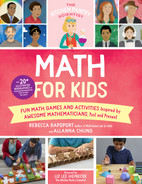INTRODUCTION
Counting has always been an essential part of human existence. From making sure each member of a group was accounted for to portioning out food, math has always been necessary. Math is so important, in fact, that various mathematical ideas were discovered and rediscovered all across the world, sometimes simultaneously, by people who had never met each other. This resulted in different cultures learning different math concepts.
While all ancient civilizations began their math journey with counting, they often expanded their understanding in different directions. Some ancient civilizations, lacking a word for the number zero, had more limited mathematical thinking. Societies that had an understanding of negative numbers could go much further. The ancient Chinese viewed negative numbers as deficits and positive numbers as surpluses, allowing them to work with both. On the other hand, the ancient Greeks thought the idea of negative numbers was absurd.
Most schools teach math in a straight line: first you learn one concept, which leads you to the next and the next. This often causes children to become discouraged with math. If they have trouble with one concept, they might not want to learn more. However, kids enjoy and thrive in math when they can bring their own creativity into play.
Math is like a tree. You climb the trunk and are met with a fork, two or more options of where to climb next. You can pick one direction at first, then climb back down to explore the others later. The paths continue to split, branching out in every direction. Sometimes, branches will twist around each other, different areas of mathematics arriving at the same beautiful conclusion or building together to form even more possible areas of exploration. Because of all the options, different civilizations explored vastly distinct areas of mathematics.
Math isn’t always explored to address a need. Many mathematicians study math simply because it is beautiful. For example, both graph theory and the existence of multiple number systems are integral to the design and function of the Internet. Yet they had been thoroughly studied decades before the invention of the Internet because mathematicians found them beautiful, and this beauty made them curious. At the time these concepts were studied, mathematicians had no idea how important their discoveries would become.
In The Kitchen Pantry Scientist: Math for Kids, we explore the lives of twenty-two mathematicians throughout history. Each story describes their lives, work, and accomplishments, alongside setbacks they may have faced. For each mathematician, there is a fun hands-on activity inspired by their work, with a step-by-step guide and accompanying illustrations. Some of the projects are directly inspired by the mathematician’s work and others are in a field the mathematician studied. Similar projects are grouped together, so readers may wish to skip around rather than work through the book in order. Readers will learn how to make an alien planet complete with a car with square wheels, solve fun puzzles, play games, do a magic trick, and more! We hope that by showing you how fun and creative math can be, as well as showing you many different branches of the tree of math, you will fall in love with math just like we did!
—Rebecca Rapoport and Allanna Chung
